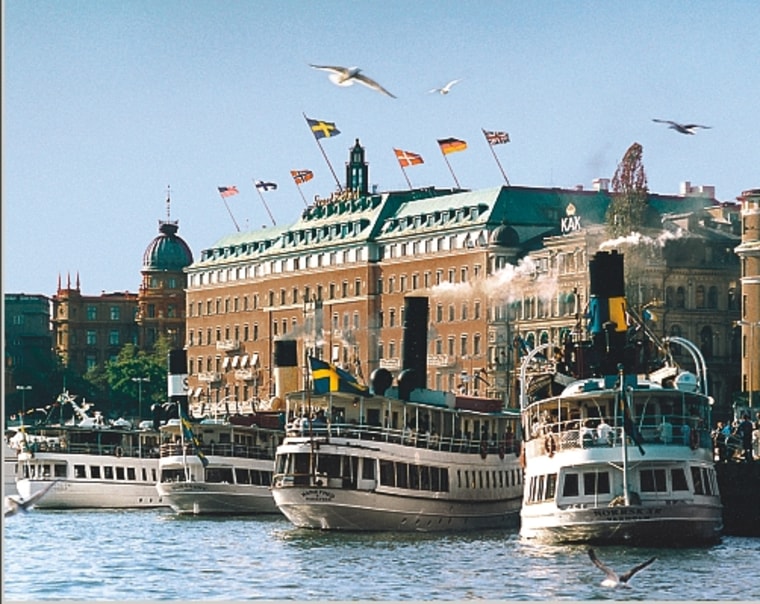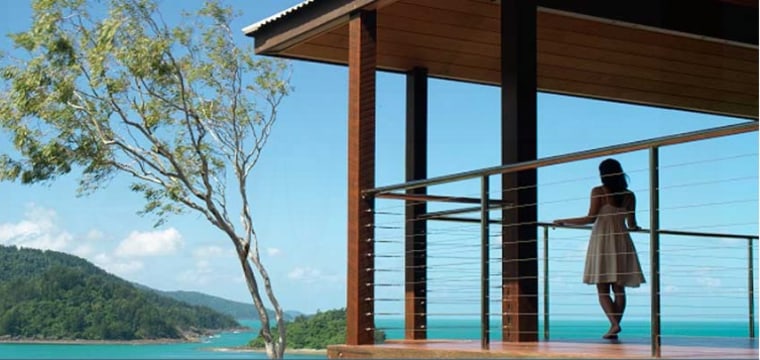Americans who vacationed in Stockholm this past June were lucky enough to catch the Swedish city's midsummer festival, which takes place the last week of the month. However, they were not so lucky when it came to the lousy exchange rate.
One dollar bought six Sweden kronor, meaning a café latte for 30 kronor set you back $5. Today, that same latte costs only $3.79, a drop of 32 percent. Imagine how much less a day trip or a full night on the town in Stockholm costs.
Why the discrepancy? The dollar is stronger than it has been in months and, against some currencies, years. The strength of the dollar is largely related to risk aversion, explains Kathleen Stephansen, director of global economics at Credit Suisse in New York. Right now, there is so much uncertainty in the global markets that countries would rather have a lower value against the dollar than no value at all.
The Australia dollar, for example, has dipped: 1.6 AUD now equals $1, a 52 percent jump from June. And there are similar situations across Eastern and Western Europe, Asia and South America.
In fact, the dollar—when compared with a weighted average of major foreign currencies' values—is the strongest it's been since June 2007, according to a current Federal Reserve Index. This is good news for American jet-setters. Suddenly, an "expensive" trip may not be considered so expensive.
"Now that we're seeing these other currencies suffering, there's been a bit of an increase in traffic going to certain countries," says Diane Clarkson, a San Francisco-based travel analyst for market-research firm Forrester.
Courting the currency
To encourage that traffic, hotels in several different travel hot spots are offering guests special prices; all of a sudden, they want American dollars, just like the old days.
There are even deals in notoriously expensive Ireland. Guests of the Ritz Carlton Hotel at Powerscourt Estate, near Dublin, will pay the euro rate in dollars for most of Spring 2009. That means a room for 195 euros will only cost you $195 (the actual exchange rate would make the room cost $245).
And as the Canadian dollar has returned to a deflated state, ski holidays up north have never seemed more reasonable. Those heading to Quebec for some skiing this winter should consider stopping in metropolitan Montreal for a night or two. At Le Meridien Versailles, the "birthday" package offers guests one night's stay for 169 CAD, with a second and third night priced at your birth year (1958 equals 58 CAD, for example). That's under $300 for three nights.
Returning the favor
On the flip side, U.S. hoteliers, who relied on visitors from Europe, Canada, Australia and other places with strong currencies to make up for the decrease in U.S. consumer spending, are now cutting deals to keep those travelers coming back.
For example, the Loews Regency Hotel on New York's Upper East Side is offering foreign visitors a three-night package, starting at $700 per night, that includes a 15% discount card for Bloomingdales, one complimentary lunch for two at the hotel's restaurant and a 25% discount on select treatments at the spa. Besides the shopping, eating and relaxation perks, approzimately £429 a night for a luxury hotel room--with amenities including a city-view balcony, in-room checkout and an in-room safe--is a fair price. (Comparitively, at the posh Lanesborough Hotel in London, rates for a similar room start at £845.)
"Reaching an international audience is key for us," says Joe Gaeta, director of sales and marketing at Loews Regency.
Still, American travelers are the lucky ones right now. There is, however, one caveat: If you're planning on heading to Europe or Russia in the next few months, the weather is less than stunning.
"This [economic perk] is out of step with travelers' typical leisure patterns," says Clarkson. "Summer is over, and weather is not typically on [the traveler's] side."
In Belgium, for example, it's already dipping into the low 40s in the evening. For those enamored with beer and chocolate, it might be worth the trip; for others, perhaps not.
If you're willing to endure the longer flight, however, Australia and New Zealand are better bets in terms of weather—and you'll still see your dollar go further than it did a few months ago.

In Australia, beach resorts are offering packages everywhere from Sydney to the Great Barrier Reef, while luxury lodges in New Zealand are attempting woo American visitors with "experiential" holidays. At Treetops Resort in Rotorua, New Zealand, the highlight of the stay is a tour the Maori Indigenous Food Trail. On the trail, guests learn about native Maori food while picking indigenous herbs that the chef then includes in the evening meal. While rates start at $1,420, that cost pales in comparison to the June 2008 rate of $2,000.
Of course, airline prices are still high—and will remain so. Clarkson says that there are 15 percent fewer seats available this fall than there were last fall, which means there's more competition for seats, keeping prices up.
Yet, regardless of pricey flights and possibly inclement weather, those who missed out on trips abroad because of the dollar's low value may see their currency's comeback as an opportunity.
"It's worth looking at," says Clarkson.
